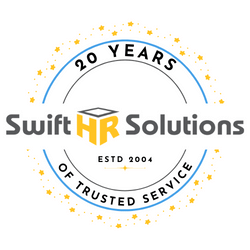Overcoming the Challenges of Remote Onboarding
By embracing the trend of remote work, companies are not only meeting the demand for flexibility from their employees, but also saving money. While these organizations enjoy a satisfied workforce, and larger talent pool, they face a unique set of tactical and strategic challenges when it comes to integrating new hires. How do you effectively onboard someone and foster a sense of belonging without the traditional in-person interactions? How can remote employees grasp the company’s operational norms and understand the organizational culture? To find out how organizations can be successful in onboarding remote employees, we talked with Karina Miller, Senior HR Consultant at Swift HR Solutions.
What are some of the technical challenges you come across when onboarding remote employees?
Remote onboarding is mostly a breeze now with an automated onboarding system like Rippling, Gusto or BambooHR. We have electronic forms that can be auto-filled and signed online, and video calls using Zoom, Skype, MS Teams, or Google Meet so technology has addressed several of the logistical challenges. The biggest tactical challenge is getting a laptop to the new hire on time, especially with the supply-chain shortages of late. The other trouble can be helping new hires with their IT setup if they are not very technical. Many of my Clients don’t have an IT department. For them, it is helpful to at least have an outsourced IT firm to help with setup issues if there isn’t anyone internally who can assist.
The other challenge is meeting the US Customs and Immigration Services requirement to physically view I-9 identification within 3 days of hire, which comes back into effect on August 1. (Get help on this issue with our summary)
How do you help new hires get up to speed on company culture?
Strategically, I think it’s challenging to convey the culture and help new hires understand norms and expectations. The more that companies have thought through, documented, and included those kinds of things in their onboarding program, the easier it is. I’m talking about things like company values, team agreements, and company goals, and even policies and procedures. There might be implicit things that everyone just “knows” about the expectations. Make as much as possible explicit rather than making new hires figure it all out. For example, I have a company that gives every employee a certain amount of free product every month. I don’t want new hires guessing about how to utilize that benefit, or whether or not it actually applies to them. We go out of our way to make it explicit, especially to temporary employees, contractors, and interns, that this perk does apply to them. If the CEO has major pet peeves, help new hires with those things, too. It’s harder to pick up on cultural cues when you are working remotely.
What tips would you give to remote companies to enhance their onboarding?
To make it easier on the new hire, I encourage managers to put together a reasonable onboarding schedule with some introduction meetings and some individual time to get set up on the first day, including at least 30 minutes with HR, and to outline clear expectations for the first week, month, quarter, etc. I also remind managers to be sure to add the new hire to appropriate email aliases, Slack groups, and meeting invitations so they don’t get left out by accident. To make it more interesting, I encourage the company to send a swag/goody box to arrive by their first day of work. Zoom team welcome lunches with pre-ordered and/or company-paid lunches can be fun, too. It’s always great to show up to a new job already on the org chart and company directory, too. With electronic systems, that’s easier than ever. Get the basics and details right, think through their experience, get creative, and have fun!
Effective onboarding sets the tone for an employee’s experience with your company. And beyond helping each employee integrate, having a formalized onboarding process has been found to significantly increase the likelihood that your employees will promote your brand to others as a great place to work.1 While technology and automation have made remote onboarding easier than ever to execute, there are still strategic challenges to helping a new hire feel engaged. Document your culture, get involved in creating a great experience, and use your creativity to innovate this important first experience.
Need to formalize your employee onboarding? Let’s talk!
1 https://www.adpri.org/wp-content/uploads/2023/05/TaW_Q22023v1a.pdf

